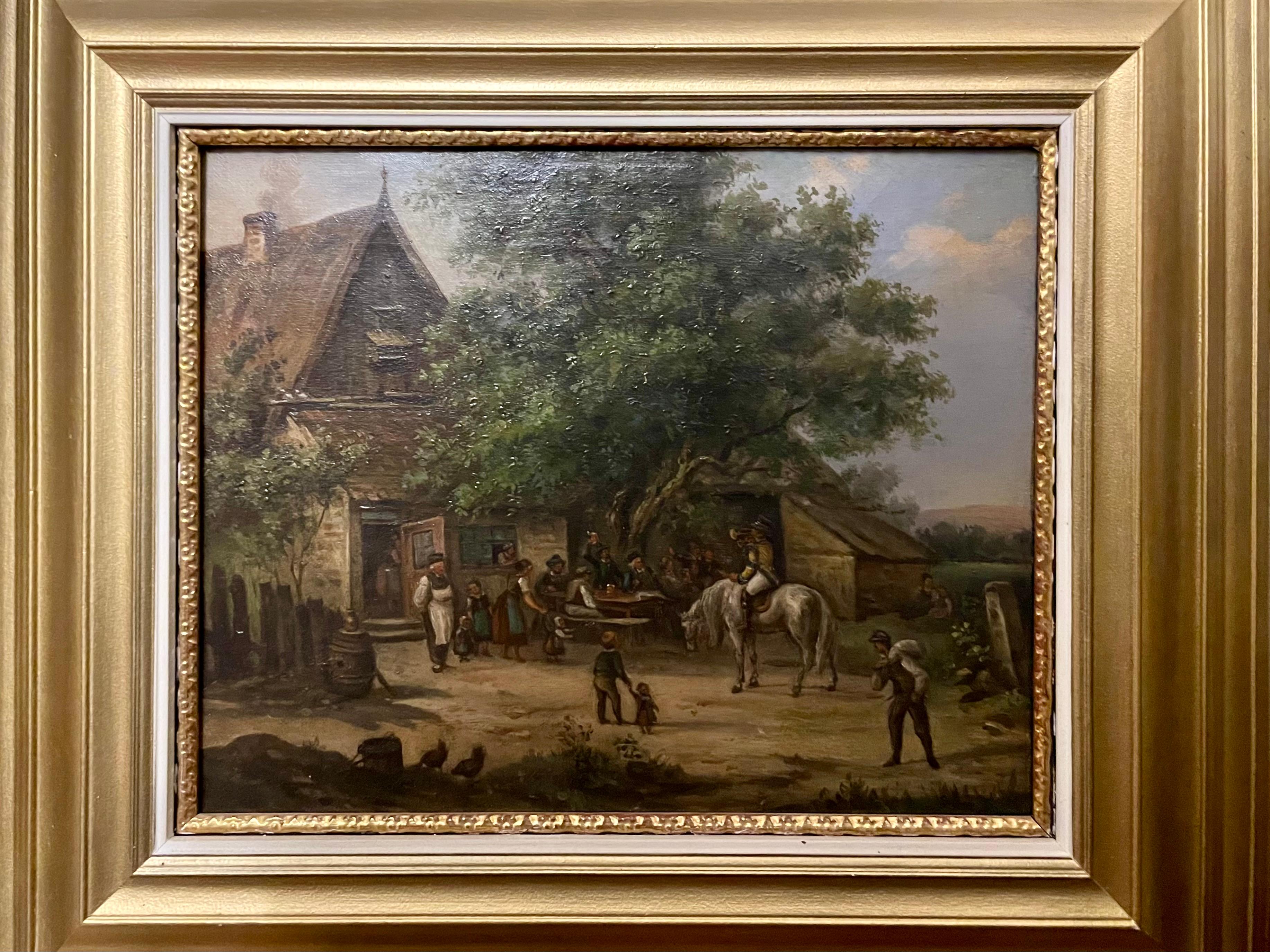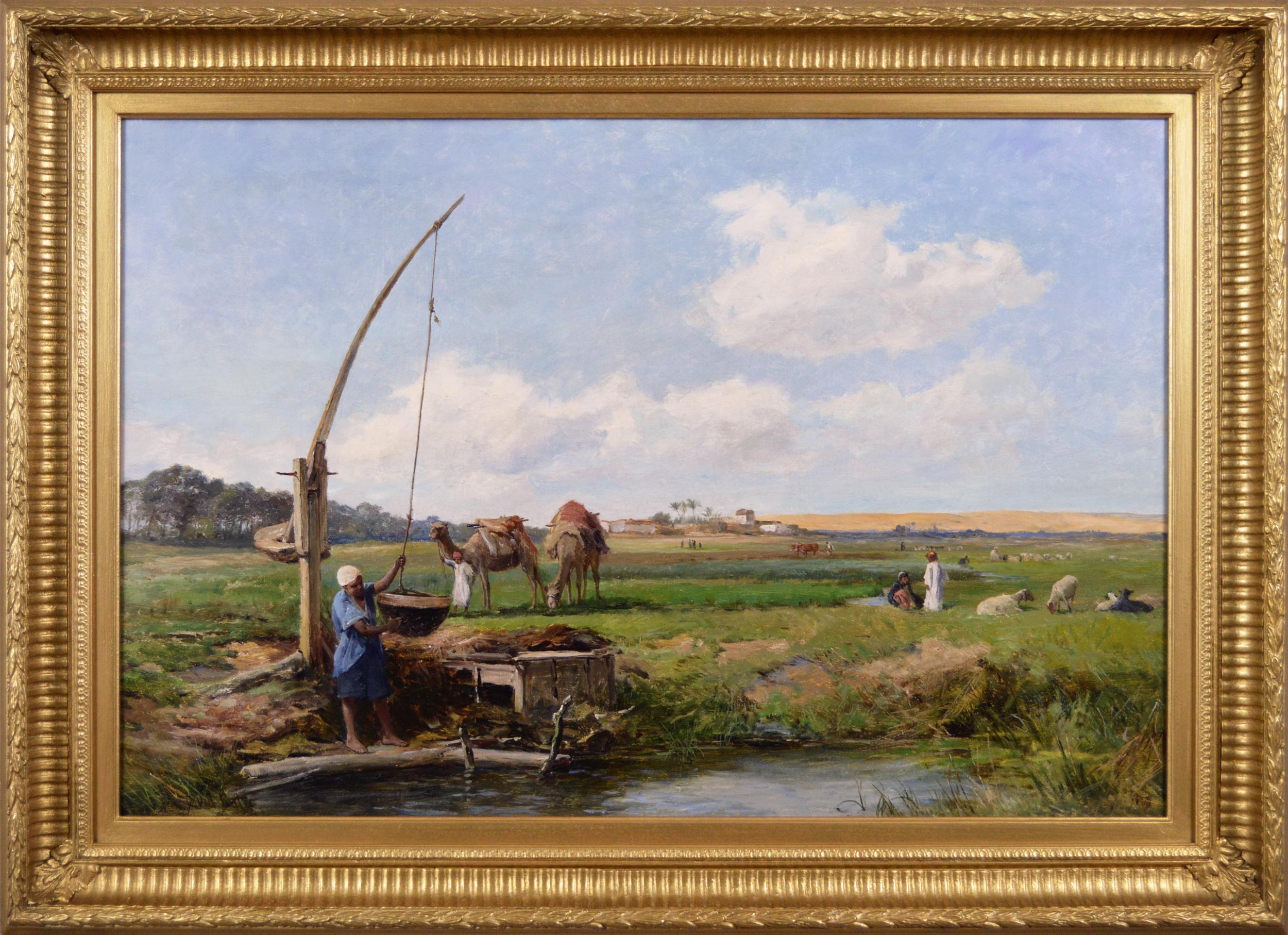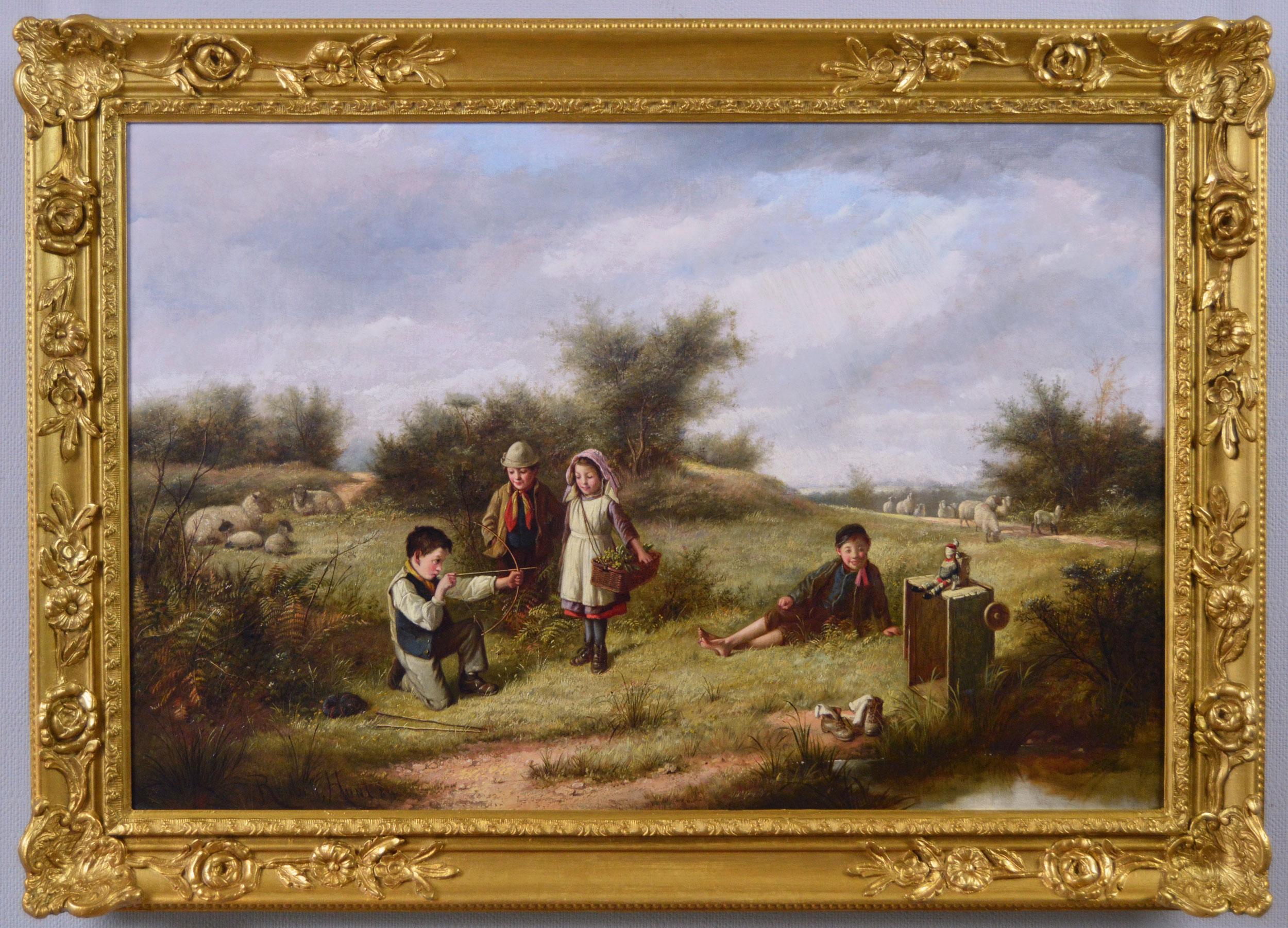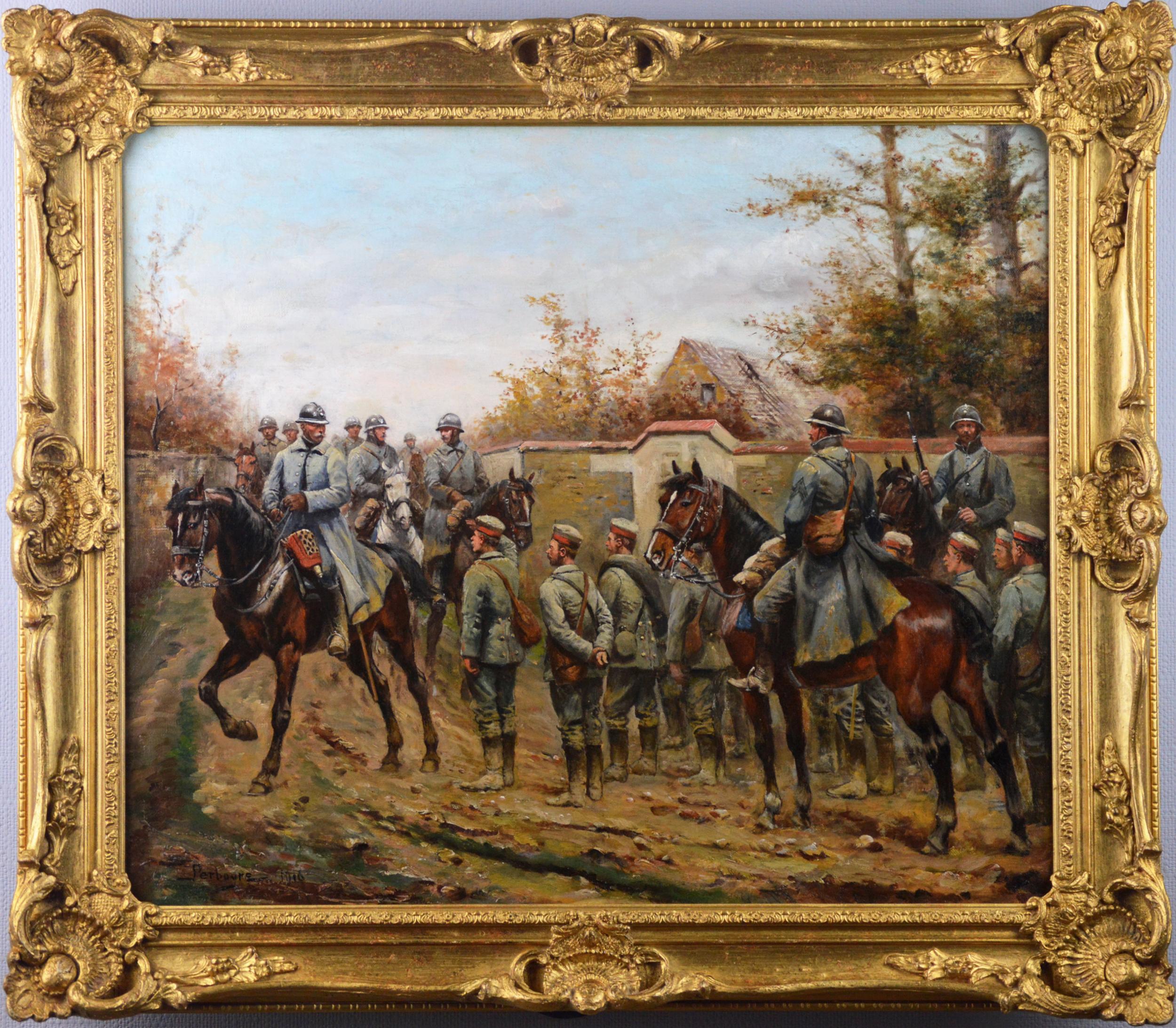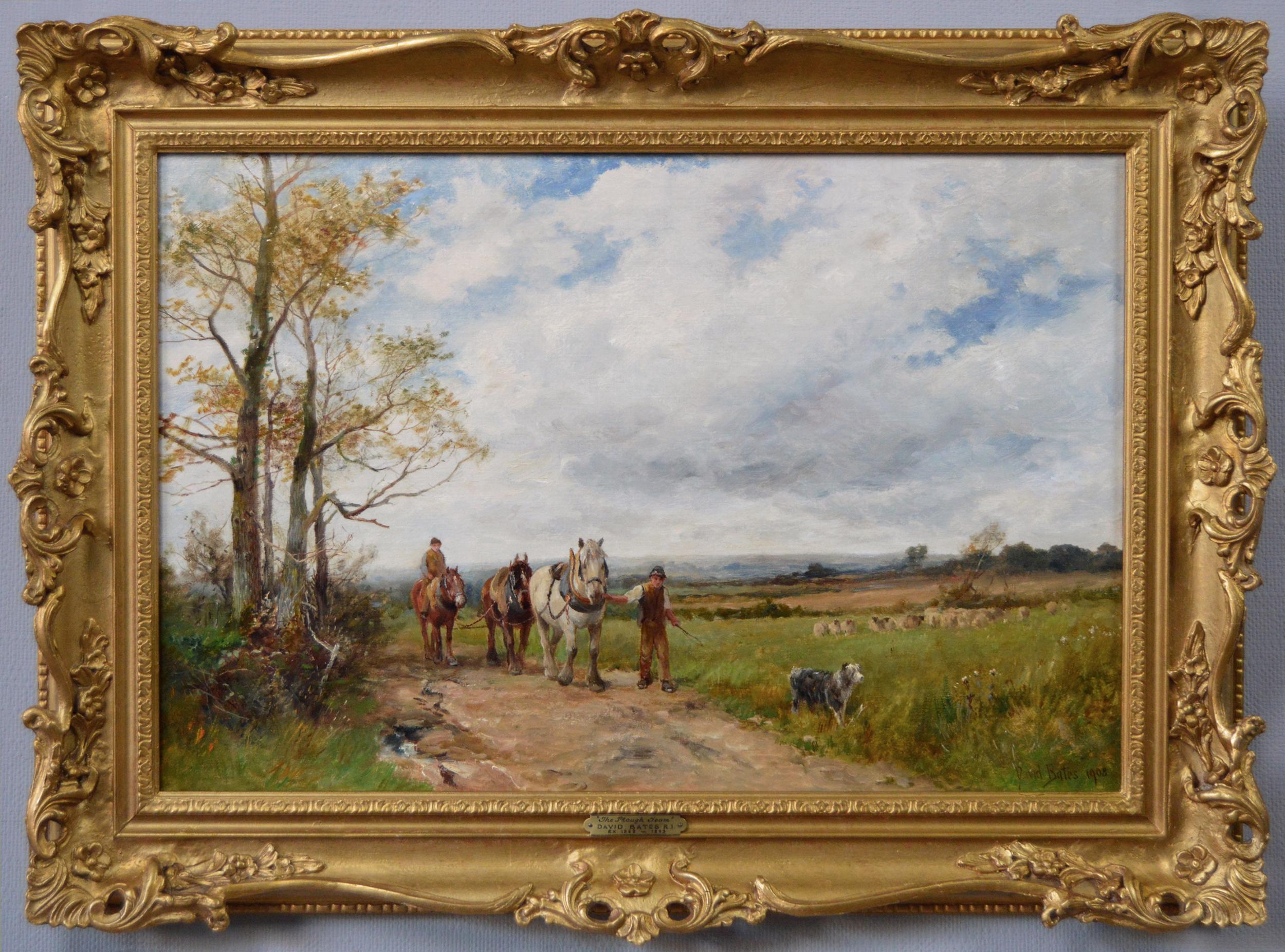Items Similar to Ezekiel in the Valley of Dry Bones
Want more images or videos?
Request additional images or videos from the seller
1 of 6
Philip Burne-JonesEzekiel in the Valley of Dry Bones
About the Item
Provenance:
Christie’s, London, 3 March 1922, lot 46 (with The Tower of Babel);
James Nicoll
Private Collection
Sotheby’s, London, 29 March 1983, lot 157
Private Collection, New York (1983–present)
Exhibited:
The New Gallery, 1888.
Works by Sir Philip Burne-Jones, Bt., The Dowdeswell Galleries, London, April – May 1914.
Literature:
“The Pictures of 1888,” Pall Mall Gazette Extra, no. 41 (1888), p. 77, ill.
Cosmo Monkhouse, “The New Gallery; II,” The Academy, vol. 3, no. 849 (1888), p. 419.
Martin Harrison and Bill Waters, Burne-Jones, London, 1973, p. 180.
Philip Burne-Jones was the only son of Sir Edward Coley Burne-Jones and, like his father, painted from an early age. He was educated at Marlborough and at University College, Oxford, but had little academic success. Philip began to exhibit at the Grosvenor Gallery in 1886 but preferred to show at the New Gallery from its opening two years later, where the present painting first appeared. He produced a few literary pictures at the beginning of his career but specialized in landscapes and portraits. Harrison and Waters have written that Philip “had a talent for portraiture and landscape, and like George Howard, infrequently ventured into imaginative or figure work. Working mostly in gouache or watercolour, once again like Howard, his style could never be confused with his father’s though it approaches it in Ezekiel in the Valley of Dry Bones, which was exhibited at the New Gallery in 1888.”
Philip’s portraits of his father, his uncle Rudyard Kipling, and Sir Edward J. Poynter hang in the National Portrait Gallery, but few of his works are in public collections. His most celebrated painting in his day was The Vampire, an 1897 canvas that was said to inspire a poem by Kipling; its present location is unknown.
Ezekiel in the Valley of Dry Bones is one of the artist’s finest and most evocative paintings. The subject is taken from Ezekiel 37:1-10 (with special reference to 37:2) and is a remarkable portrayal of the Biblical scene. Here Philip follows in the footsteps of his father, with a composition at once mysterious and romantic, and alimited palette here punctuated by the brilliant orange spot of the setting sun. Writing at the time of the New Gallery exhibition, Cosmo Monkhouse described Philip Burne-Jones’s Ezekiel as “the most impressive picture he has yet exhibited.”
When sold in 1922, Ezekiel in the Valley of Dry Bones was paired with another painting by the artist, The Tower of Babel. That work, dated 1889, is at present lost, having last appeared at auction at Sotheby’s, Belgravia, 6 December 1977, lot 100.
- Creator:Philip Burne-Jones (1861 - 1926, British)
- Dimensions:Height: 23 in (58.42 cm)Width: 18 in (45.72 cm)
- Medium:
- Movement & Style:
- Period:
- Condition:
- Gallery Location:New York, NY
- Reference Number:1stDibs: LU1021074663

About the Seller
5.0
Recognized Seller
These prestigious sellers are industry leaders and represent the highest echelon for item quality and design.
Established in 1997
1stDibs seller since 2012
17 sales on 1stDibs
Typical response time: 11 hours
- ShippingRetrieving quote...Ships From: New York, NY
- Return PolicyThis item cannot be returned.
More From This SellerView All
- Two Scenes of Diana and Actaeon (a pair)By Giovanni Battista ViolaLocated in New York, NYProvenance: Robert L. and Bertina Suida Manning, New York, until 1996 Private Collection, USA Giovanni Battista Viola was born in Bologna a...Category
17th Century Baroque Landscape Paintings
MaterialsCopper
- An Architectural Capriccio with the Preaching of an ApostleBy Giovanni Paolo PaniniLocated in New York, NYProvenance: Santambrogio Antichità, Milan; sold, 2007 to: Filippo Pernisa, Milan; by whom sold, 2010, to: Private Collection, Melide, Switzerland De Primi Fine Art, Lugano, Switzerland; from whom acquired, 2011 by: Private Collection, Connecticut (2011-present) Literature: Ferdinando Arisi, “Ancora sui dipinti giovanili del Panini,” Strenna Piacentina (Piacenza, 2009): pp. 48, 57, 65, fig. 31, as by Panini Ferdinando Arisi, “Panini o Ghisolfi o Carlieri? A proposito dei dipinti giovanili,” Strenna Piacentina, (Piacenza, 2010), pp. 100, 105, 116, fig. 101, as an early work by Panini, a variant of Panini’s painting in the Museo Cristiano, Esztergom, Hungary. This architectural capriccio is one of the earliest paintings by Giovanni Paolo Panini, the preeminent painter of vedute and capricci in 18th-century Rome. The attribution to Panini has been endorsed by Ferdinando Arisi, and a recent cleaning of the painting revealed the artist’s signature in the lower right. Like many of his fellow painters working in Rome during his day, Panini was not a native of the Eternal City. He first trained as a painter and stage designer in his hometown of Piacenza and moved to Rome at the age of 20 in November 1711 to study figure painting. Panini joined the workshop of Benedetto Luti (1666-1724) and from 1712 was living on the Piazza Farnese. Panini, like many before and after him, was spellbound by Rome and its classical past. He remained in the city for the rest of his career, specializing in depicting Rome’s most important monuments, as well as creating picturesque scenes like this one that evoked the city’s ancient splendor. The 18th century art historian Lione Pascoli, who likely knew Panini personally, records in his 1730 biography of the artist that when Panini came to Rome, he was already “an excellent master and a distinguished painter of perspective, landscape, and architecture.” Panini’s earliest works from this period still show the evidence of his artistic formation in Piacenza, especially the influence of the view painter Giovanni Ghisolfi (1623-1683). However, they were also clearly shaped by his contact in Rome with the architectural capricci of Alberto Carlieri...Category
18th Century Old Masters Figurative Paintings
MaterialsCanvas, Oil
- Holy Family with the Infant St. John the BaptistLocated in New York, NYLubin Baugin (Pithiviers 1610 – 1663 Paris) Holy Family with the Infant Saint John the Baptist Oil on canvas 22 x 42 ¼ inches (55.9 x 107.3 cm) Provenance: Marcello and Carlo ...Category
17th Century Old Masters Figurative Paintings
MaterialsCanvas, Oil
- Julius Caesar on HorsebackBy Antonio TempestaLocated in New York, NYProvenance: Private Collection, South America Antonio Tempesta began his career in Florence, working on the decoration of the Palazzo Vecchio under the direction of Giorgio Vasari. He was a pupil first of Santi di Tito...Category
16th Century Old Masters Paintings
MaterialsOil, Canvas
- Madonna and Child with Angels in the CloudsLocated in New York, NYProvenance: Charles H. and Virginia Baldwin, Claremont, Colorado Springs, Colorado ca. 1907-1934; thence by descent until sold in 1949 to: Charles Blevins Davis, Claremont (renamed Trianon), Colorado Springs 1949 -until gifted in 1952 to: The Poor Sisters of Saint Francis, Trianon, Colorado Springs, 1952 until acquired, 1960, by: John W. Metzger, Trianon, renamed as the Trianon School of Fine Arts, Colorado Springs, 1960-1967; when transferred to: The Metzger Family Foundation, Trianon Art Museum, Denver, 1967 - 2004; thence by descent in the Metzger Family until 2015 Exhibited: Trianon Art Museum, Denver (until 2004) The present work is a spectacular jewel-like canvas by Amigoni, rich in delicate pastel colors, most likely a modello for an altarpiece either lost or never painted. In it the Madonna stands firmly upon a cloud in the heavens, her Child resting on a delicate veil further supported by a cloud, as he gently wraps his arm around his mother’s neck. From above angels prepare to lower flowers and a wreath, while other angels and seraphim surrounding the two joyfully cavort. Dr. Annalisa Scarpa, author of the forthcoming monograph on Jacopo Amigoni...Category
18th Century and Earlier Figurative Paintings
MaterialsCanvas, Oil
- Job Cursed by His WifeBy Giovanni Battista LangettiLocated in New York, NYProvenance: Alfred (1883-1961) and Hermine Stiassni (1889-1962), Brno, Czech Republic, by 1925; thence London, 1938-1940; thence Los Angeles, 1940-1962; thence by descent to: Susanne Stiassni Martin and Leonard Martin, San Francisco, until 2005; thence by descent to: Private Collection, California Exhibited: Künstlerhaus, Brünn (Brno), 1925, as by Ribera. “Art of Collecting,” Flint Institute of Art, Flint, Michigan, 23 November 2018 – 6 January 2019. Literature: Alte Meister...Category
1670s Old Masters Paintings
MaterialsCanvas, Oil
You May Also Like
- Alone at the FerryLocated in Hillsborough, NC'Alone at the Ferry' is signed by British artist A.F. Patten (Alfred Fowler Patten 1826- 1889 or after). This is a fine oil on canvas painting of a young Victorian woman waiting for ...Category
1880s Victorian Figurative Paintings
MaterialsOil, Canvas
- Village SceneLocated in Hillsborough, NCFine 19th century oil painting of bustling Austria/Germanic village with horse, rider and various figures outside an Inn, attributed to Arthur Georg Ramberg (1819-1879), well known for figurative paintings. The rider is apparently bringing news to the people; men sitting by the table drinking, women with children, people in the Inn doorway, one looking out the window. There is a great deal of detail in the scene, tree and Inn house...Category
19th Century Victorian Figurative Paintings
MaterialsCanvas, Oil
- 19th Century North African river landscape oil painting of a man using a ShadoofBy David Bates b.1840Located in Moreton-In-Marsh, GloucestershireDavid Bates British, (1840-1921) The Shadoof Oil on canvas, signed, further inscribed verso Image size: 19.75 inches x 29.75 inches Size including fram...Category
19th Century Victorian Landscape Paintings
MaterialsOil, Canvas
- 19th Century genre oil painting of children playingLocated in Moreton-In-Marsh, GloucestershireReuben Hunt British, (1857-1938) Taking Aim Oil on canvas, signed & dated (18)84 Image size: 19.5 inches x 29.5 inches Size including frame: 25.25 inches ...Category
19th Century Victorian Figurative Paintings
MaterialsCanvas, Oil
- Military WW1 oil painting of French & German SoldiersBy Paul Emile Léon PerboyreLocated in Moreton-In-Marsh, GloucestershirePaul-Emile Perboyre French, (1851-1929) The Surrender Oil on canvas, signed & dated 1916 Image size: 20.5 inches x 25 inches Size including frame: 26.25 inches x 30.75 inches Paul-E...Category
Early 20th Century Victorian Figurative Paintings
MaterialsCanvas, Oil
- Early 20th Century Worcestershire landscape oil painting of a plough teamBy David Bates b.1840Located in Moreton-In-Marsh, GloucestershireDavid Bates British, (1840-1921) The Plough Team, Bredon’s Norton Oil on canvas, signed & dated 1908, further inscribed verso Image size: 15.5 inches x 23.5 inches Size including frame: 21.5 inches x 29.5 inches A lovely landscape painting of a plough team on a country track near Bredon’s Norton by David Bates. Bredon’s Norton is a village located in the Cotswolds, on the slopes of Bredon Hill in South Worcestershire. The America women’s rights activist Victoria Woodhull Martin moved to the village in 1901 and by 1908 had set up an agricultural school for women at her Norton’s Park estate. The Antarctic explore Raymond Priestley also lived there. Although Bates was living in Surrey at the time of this painting, he would have been familiar with the area after having lived and worked in Worcestershire for some considerable time. He would have also most likely been aware of Victoria Woodhull Martin and the school. David Bates was born in March, Cambridge in 1840 to Benjamin Bates a shoe maker and Sarah Bates. By 1851, the family had moved to Upton upon Severn in Worcestershire and from 1855 Bates became an apprentice at the Royal Worcester Porcelain Works in Worcester. There he developed his artistic talent, painting flower decorations onto vases and plates. At some point after 1861, he became a full time artist and made his debut at the Royal Academy in 1863, continuing to exhibit there until 1893. He also exhibited at the Royal Birmingham Society of Artists, Suffolk Street and the Grosvenor Gallery. He married Elizabeth Higgs from Worcester in 1867 and they lived at Cherry Orchard, Bath Road in Worcester where their children were later born. Their second child John Bates Noel (1870-1927) became a landscape artist and their younger son David Samuel...Category
19th Century Victorian Landscape Paintings
MaterialsOil, Canvas
Recently Viewed
View AllMore Ways To Browse
Howard And Son Style
19th Century Oil Portrait Pairs
Pair 19th Century Oil Portrait Paintings
Pair Of 19th Century Oil Portraits
Oil Literary Portrait
J Bonal
Harrison And Son
Bill Martin
Howard Jones
Howard Pair Sons
The Vampire
April Harrison
George Waters
Babel Tower
Tower Of Babel
Philip Jones
Belgravia London
Pall Mall Oil

